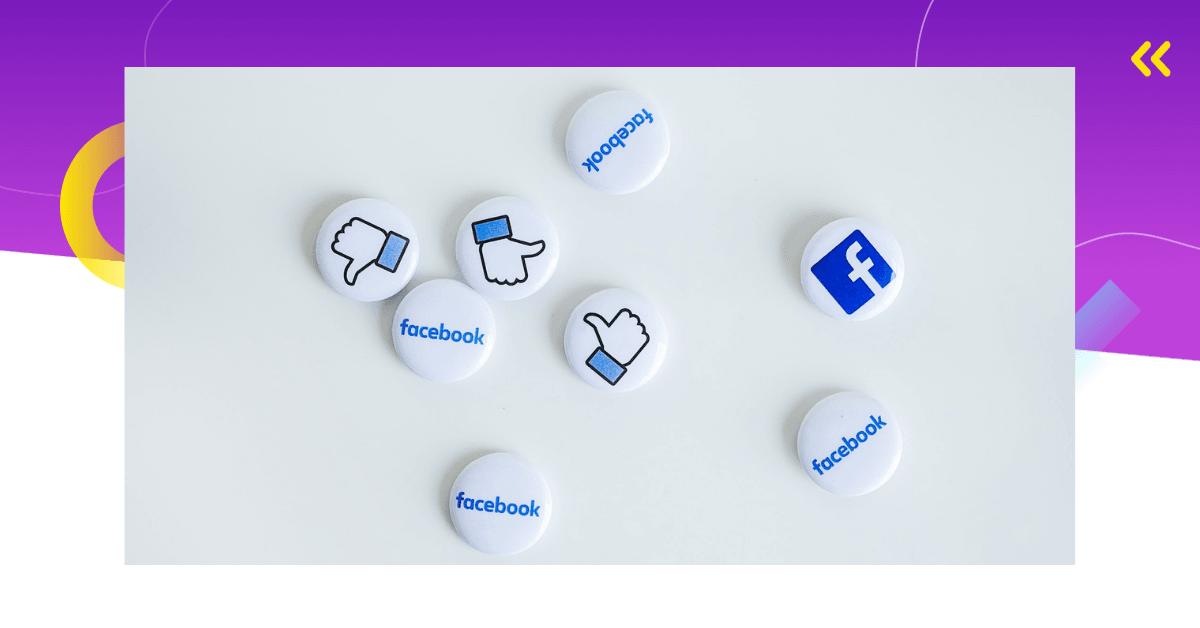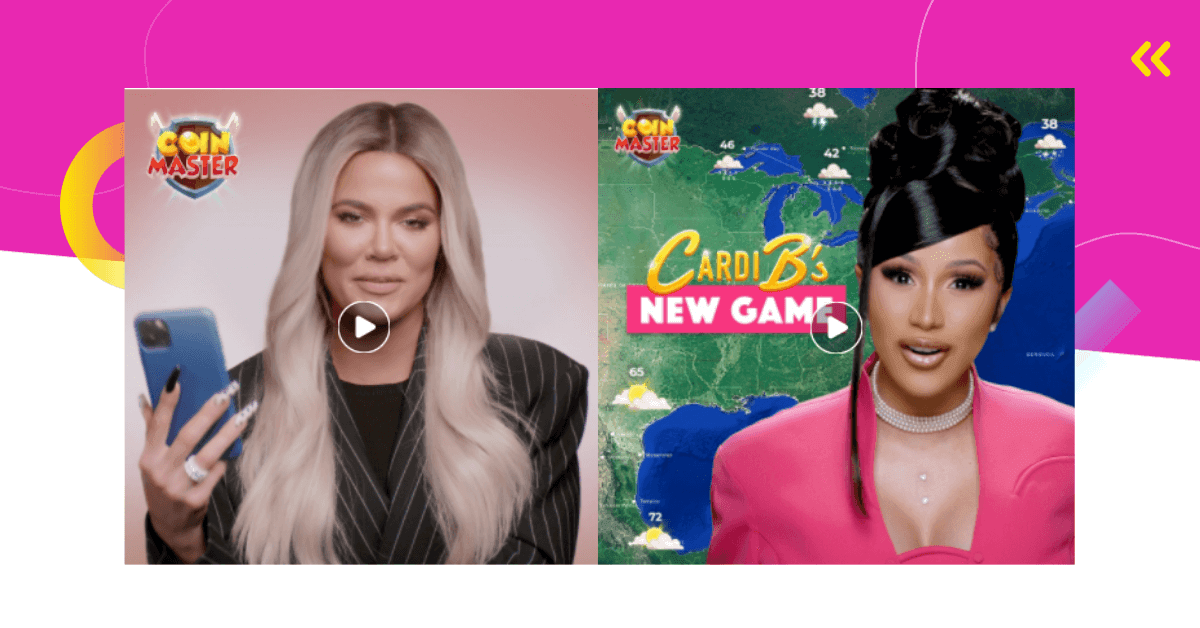The Facebook Ads algorithm is becoming more and more powerful. It’s no wonder there’s an increasing number of Facebook campaigns for mobile games.
But the big question is – how to utilize Facebook Ads for maximum performance?
Perhaps you think, “Oh well, I can’t do anything about it. If Facebook likes my ads they will perform well. If not, I’m doomed”.
Well, let me convince you otherwise.
In this article, we break down our own process of creating Facebook campaigns for mobile games into these 3, well actually 4, simple steps.
Step #0 – Creative Production
Before you even begin creating a Facebook campaign for mobile games, you need to have creative assets.
That’s why creative production is step zero.
Video or Image?
Pictures are nice, but nothing entices mobile gamers more than video.
Let me explain.
When it comes to advertising mobile games, the video ad format is far superior than images.
Why?
It’s simple – people want to get a real taste of the game before they download it and see how it’s played. It’s hard to portray that in an image.
Additionally, video ads tend to be more attention-grabbing and exciting, which also contributes to better conversion rates when compared to images.
However, it’s not easy to create a good video ad that converts.
Video Ads for Facebook Campaigns
If you opt for a video, have in mind that Facebook auto-plays your video. While this is a good feature, it can also be tough to work with. Why?
Well, you have to bear in mind that most Facebook users are just scrolling through their main page, so you need a good way to capture their attention in order to stop them from scrolling on by.
This means that you need to create a good intro, and once you capture your audience’s attention, you need to come up with a good storyline for the rest of your ad.
Imagine that you’re going fishing, and the fish eats your bait. That’s great, but now, there is an equally hard part of having to reel the fish in. And that is exactly how attracting attention works with ads.
Since it’s well known that attention spans are getting shorter and shorter, always try to go with the “show, don’t tell” approach.
You can add subtitles and captions, but don’t overdo them because neither Facebook algorithm or its users like a lot of text.
Focus on the visual part of your story, whether you opt for a photo or a video ad.
Also, if you’re using music and sound effects in your ads (which you should!), you should pay attention to the fact that Facebook auto-plays its videos on mute. (Check out more Facebook ad specs here.)
You can remind people to turn on the sound by writing a message in the video or including an illustration.
Here are some more tips to guide you.
Tips for Creating Video Ads
As I mentioned before, expect you’ll need to produce a lot of video creatives. Luckily, they don’t need to be long. The ideal length is between 15 and 30 seconds.
You should record gameplay footage that best represents your game. Naturally, you need to have your target audience in mind and think about the parts of gameplay that will appeal to them the most.
Recording gameplay for video creatives is a lot like filmmaking – you need to create a nice composition, make it visually appealing, and edit it in an exciting way.
Remember that the first few seconds of the video need to be interesting and engaging enough so people continue watching. In other words, grab their attention right away.
Include a powerful CTA at the end of the video.
How Many Creatives Do I Need?
I know what you are thinking, “I just have to make a ton of creatives, and some of them will perform well”, and you are partially right.
But it’s not that simple.
Let’s talk numbers.
Out of all the creatives you produce, only about 5% of them will get you the results (KPI’s) that you want. It means only about 5 out of 100 of all new creatives can be called “winners” and 95 of 100 creatives will fail. In other words, 5% of creatives will generate the majority of your revenue.
That’s why knowing what you are doing and how you are doing it always helps.
My advice is to start small. Extensively test different ideas and get as much data as you can.
As you go on, increase the number of videos you’re producing.

Step #1 – Setting Up Facebook Campaigns for Mobile Games
You are all hyped up about the attention-grabbing creatives you created. Now it’s time to set up Facebook campaigns for mobile games.
As we mentioned before, you can leave everything to the Facebook algorithm, sit back, and say, “I’ve done all I can, either people like my game/creative or they don’t.”.
But you can also be smart about it and set up your campaigns so that they convert the maximum number of users.
There are tips and tricks that you can use to enhance your campaigns and maximize the benefits the Facebook algorithm can offer.
After numerous campaigns we’ve set up, and an infinite number of ad sets and ads we’ve uploaded, there are more than a few things we’ve picked up along the way.
Here’s what you need to know.

Choosing the Campaign Type
It’s a no-brainer that you should choose App Install as the campaign type.
After all, the goal is to acquire users for your mobile game.
You can do that by selecting Create Ad in the top right corner of Ads Manager. Then select App Installs as the objective.
App Install Ads make it easy for developers and publishers to reach users across Facebook, Audience Network, and Instagram.
What’s great about App Install ads is that they send users directly to the app store, which makes it easy for them to download the game right away.
Setting a Budget
Let’s talk about budgeting.
You may think, “It is easy for you because you have a big budget.”
Let me tell you right away – it’s not about that. It’s about who can optimize better. By optimize I mean using the amount that you are comfortable with, but that also brings you enough data to be relevant.
For example, when an ad budget is too low, you’re not going to get enough data, i.e., the sample size will be too small. Therefore, the information you get is not enough to draw any conclusions about the audience, ad placement, or the mobile game itself.
On the other hand, if you set the budget too high, what often happens is that you burn through it without accomplishing any results.

Choosing Budget Optimization
Facebook lets you choose two different budget optimizations – ASBO and CBO.
ASBO stands for Ad Set Budget Optimization and CBO stands for Campaign Budget Optimization.
When you choose ASBO, it can happen that there’s an ad set that works really well but because of ASBO, it can’t spend more that day. Or it can happen that you’re wasting your budget on an ad set that’s not producing good results.
But if you choose CBO, Facebook decides for you – it lets the algorithm allocate the budget. So if a particular ad set is performing well, the algorithm will put more money towards that ad set.
However, deciding between ASBO and CBO is not that easy.
While CBO optimizes campaigns in a way that Facebook thinks is good, ASBO allows you to test. You can, at any moment, decide how much you want to spend on a specific audience or creative.
That’s why the first phase should be ASBO, in order to test what works. Then, in the second phase, you can choose CBO. It will get you better results once you know the direction you’re going in.
In short, CBO is for things that already work, while ASBO lets you test and figure out what works.
Another important thing is to go with the Lowest Cost (LC) option for the testing phase and with Bid Cap (BC) when launching the mobile game.
Earlier I’ve mentioned KPIs, which are also important in this phase. By defining KPIs, you make it easier for yourself to identify your goals and have clear indicators of success.
Choosing the Number of Ads
The next suggestion is to keep the number of ads per ad set between 3 and 7.
“Why is that?”, I hear you ask.
The answer is quite simple honestly.
You want to test all the ads per ad group, right? Well, if you use from 3 to 7 Ads per Ads set, you can. That way you’ll get relevant data not only per ad set, but also for every individual ad.
By keeping the number of ads per ad set between 3 and 7, the campaign will optimally split the spend among ad sets and ads. Keep in mind, the more ad sets and ads you have overall, the bigger budget you need and vice versa.

Testing Mobile Game Ads
In order to identify which ads will get you more users, you need to test them.
Here’s how this process should go. You set up a campaign optimized for Lowest Cost before game launch. It should have 3 ad sets and 3-7 ads for each ad set.
Now test for 3 days.
Start with a Simple Variation Test, by changing Call to Action/buttons (CTA); text headers, format, and video length.
After that, move to advanced variation testing, which includes: colors, ad copy, background image, product display, logo display, and so on.
After that, you need to analyze the data you have gathered. In other words, compare the “real-life” data to the KPIs.
You’ll notice that some of those videos stand out. You will also be able to see whether your mobile game is ready for launch.
What you do then is test variations of those winning videos. That will allow you to not only identify the winning creatives but also GEOs, audiences, etc.
Sometimes the “best” idea works, and sometimes it’s the unexpected one. That’s why data is useful – it eliminates all the guesswork as well as your subjective opinions.
After testing, collecting and analyzing data, go all-in with GEOs, bids, audiences, and so on. But remember to start small, and then scale up.

Step #2 – AEO (App Event Optimization)
Before we get deeper into app event optimization, let’s explain what it is and why it’s important.
What Is App Event Optimization and How Does It Work?
Put simply, AEO allows you to target users who are likely to complete a certain app event. Facebook offers standard app events you can choose from like “achieve level”, “tutorial completion”, “start trial”, and “purchase”.
That’s very useful because you’re not acquiring just any users out there, but high-quality users you can monetize.
As you probably know, many users download a mobile game, but then play it once or twice before abandoning it. With AEO, you can target players who are likely to engage more with your game by optimizing for the “achieve level” event.
Furthermore, app event optimization is crucial for mobile games that have in-app purchases. It allows you to target users who are more likely to make an in-app purchase.
Optimizing for App Events
So, let’s assume you completed steps 0 and 1 and now you want to focus on high-quality users and monetizing your mobile game, but you are not sure exactly when and how.
Let’s first tackle the problem of “when”.
And let’s not forget, step 0 (creative production) is never finished, you need to be constantly making new creatives. Furthermore, you need to test those creatives, which is an ongoing battle where you are constantly searching for winning creatives (benchmark KPIs).
After trying a number of approaches, cracking our heads, and analyzing the data – we came to a conclusion. If your ad account has an insufficient number of App Installs for a specific mobile game, app event optimization will not give satisfactory results.
Only after reaching about 10,000 app installs does the algorithm have enough data for a successful transition to AEO (App Event Optimization) campaigns. I know it seems a lot, but that’s the reality of the mobile gaming industry.
The good thing is, when you gather about 10,000 users by using winning creatives, that means your audience is relevant and in line with your KPIs.
The Process of Creating a Campaign Optimized for App Events
Once again, when setting up a campaign, you need to select either ASBO or CBO.
Regarding the GEO’s, gender, age, placement and so on, I can only advise you to do one thing, and that is data analysis.
Break down the data, study it and conclude what you need, figure out what is a good KPI and so on.
Regarding the audience size for AEO, aim for 5M+. For countries with 70 million people or less don’t target 1% of the audience. Instead, begin with 3% of the audience.
On the Campaign level, next to Campaign Bid Strategy select “Highest value of lowest cost”.
On the ad set level, all the way down, you have Optimization for Ad Delivery and if you’ve set up App Events inside your app, you will be able to choose between them.
One of the most common App Events are Subscribe, Purchase, Achieve Level, etc. Choose the one you want to optimize your campaign/ad set for.
Upload the winning creatives into the ad set(s), and you’ll be ready to start with App Event Optimization for your mobile game.
Keep a close eye on the Results, Mobile App Purchase, and ROAS metrics. Those will tell you how many Conversions you had depending on which app event you selected. ROAS will show you exactly what it stands for – Return on Ad Spend. If you want to see the value of conversions, you can find it in the “Purchases Conversion Value” column.
There’s no magic number for values of results and ROAS. Both depend on the amounts you have calculated based on your KPIs.

Step #3 – Getting the Most Revenue Possible
The last step in our guide is focused on getting the most revenue out of your new users. We will do that with the Highest Value bid strategy. It allows you to spend the full budget and get the highest ROAS.
The ideal approach is to simultaneously set up Step #2 (AEO) and Step #3 (HV) campaigns, and get them going.
Here’s why.
It is a different approach that achieves the same goal – getting the most out of your newly acquired users. While the main focus of app event optimization is to get users that are most likely to complete the event you have set up (Purchase, Achieve Level, etc.), in this step, the campaign is automatically optimized for Highest Value.
That is the part where Facebook’s algorithm is doing the majority of work. But still, there are a number of things you can do to improve the performance of your campaigns.
From the campaign creation point, this is what you need to do to create the Highest Value campaign on Facebook.
How to Create the Highest Value Campaign?
Once again, you need to choose between ASBO and CBO. Make the decision based on the explanations and suggestions earlier in the article regarding budget optimization.
Below budget optimization, you will see “Campaign Bid Strategy”, select the “Highest value or lowest cost”.
On the ad set level, on the bottom of the setup, you can find “Optimization for Ad Delivery”. There you will select “Value”.
You’re probably wondering, “What should be my budget?”
Your budget should be high enough to exit the learning phase of Campaign/Ad Set in the first week, so the performance can stabilize.
Secondly, we mentioned this earlier but it is a good thing to repeat, don’t upload too many creatives into one ad set, keep it in a range between 3 and 7 creatives per ad set.
Regarding the audience, placement, GEO, and so on, you can use the same one you are using in Step #2, or use a different one; it’s all up to you.
Also, you can try different placements (you are not obligated to use automatic placement every time).
Just like in Step #2, you should be monitoring the performance of your ad sets/ads. Regarding performance, we track the same metrics as in Step #2 – Results, Mobile App Purchase, and ROAS metrics.
You can also use the same audience and GEO as in the previous step. As I wrote before, the type of optimization Facebook algorithm uses is different, so from the same batch of people, you will acquire different users.
Final Thoughts on Facebook Campaigns for Mobile Games
To sum up, you should be constantly applying and running all 4 steps all the time. Step #0 to come up with creatives and produce them, Step #1 to test them and see how they perform (measure the KPI’s). Step #2 and Step #3 to acquire users that will do the “In App Action”, and get the most value from users for your mobile game. In other words, to directly monetize users.
If you need any help with setting up a Facebook campaign for mobile games, contact us!







Comments